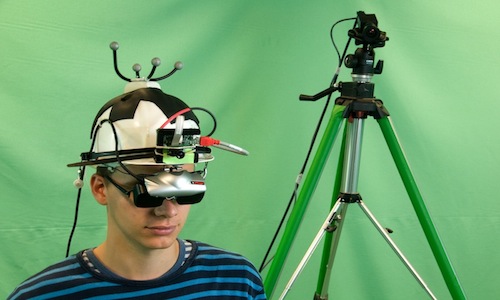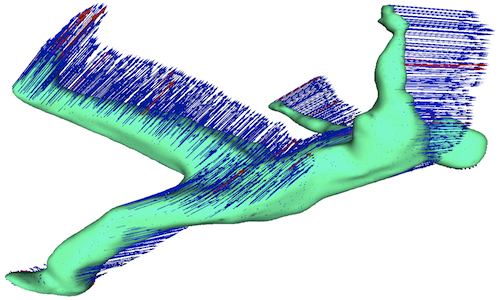First demonstrations of the capabilities of real-time 3D modeling for virtual reality applications were quite poor on the immersion side. People were able to interact with objects with their own body but they had to look at themselves on a screen. Interactions were difficult. Users had poor sensation of depth and space and their point of view on the scene had to be controlled separately. We decided to incorporate a HMD inside our setup to have first person point of view.

